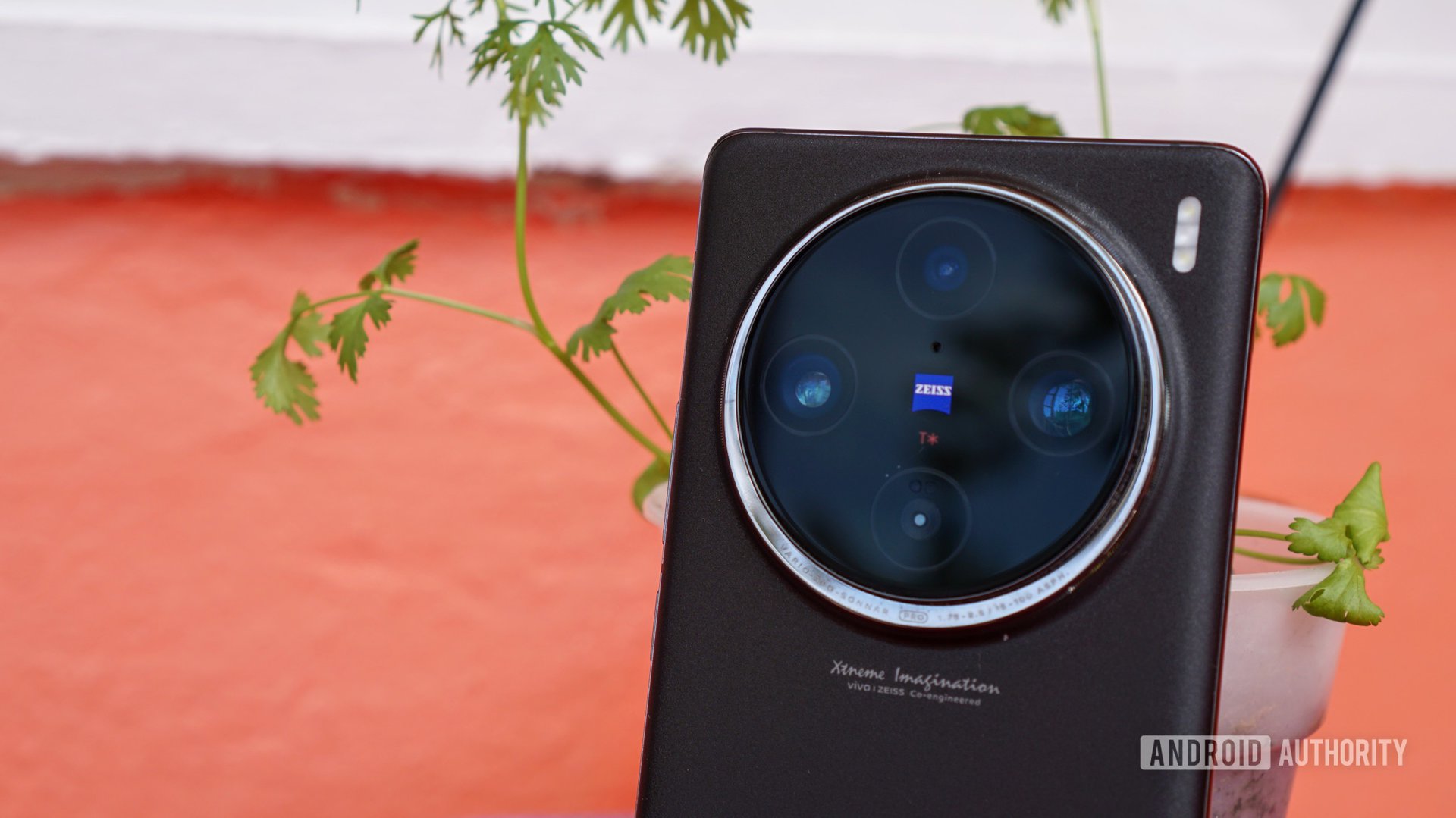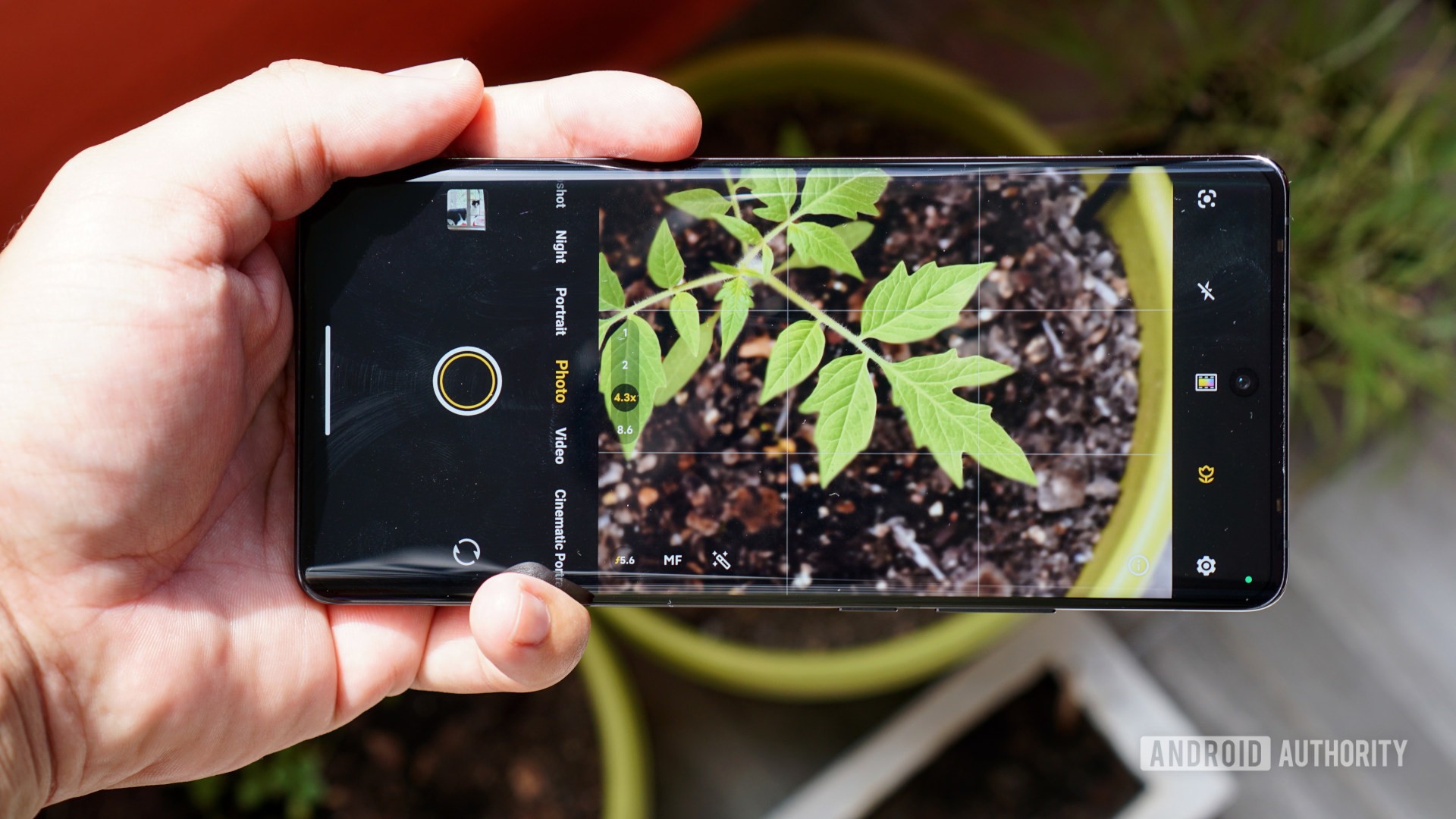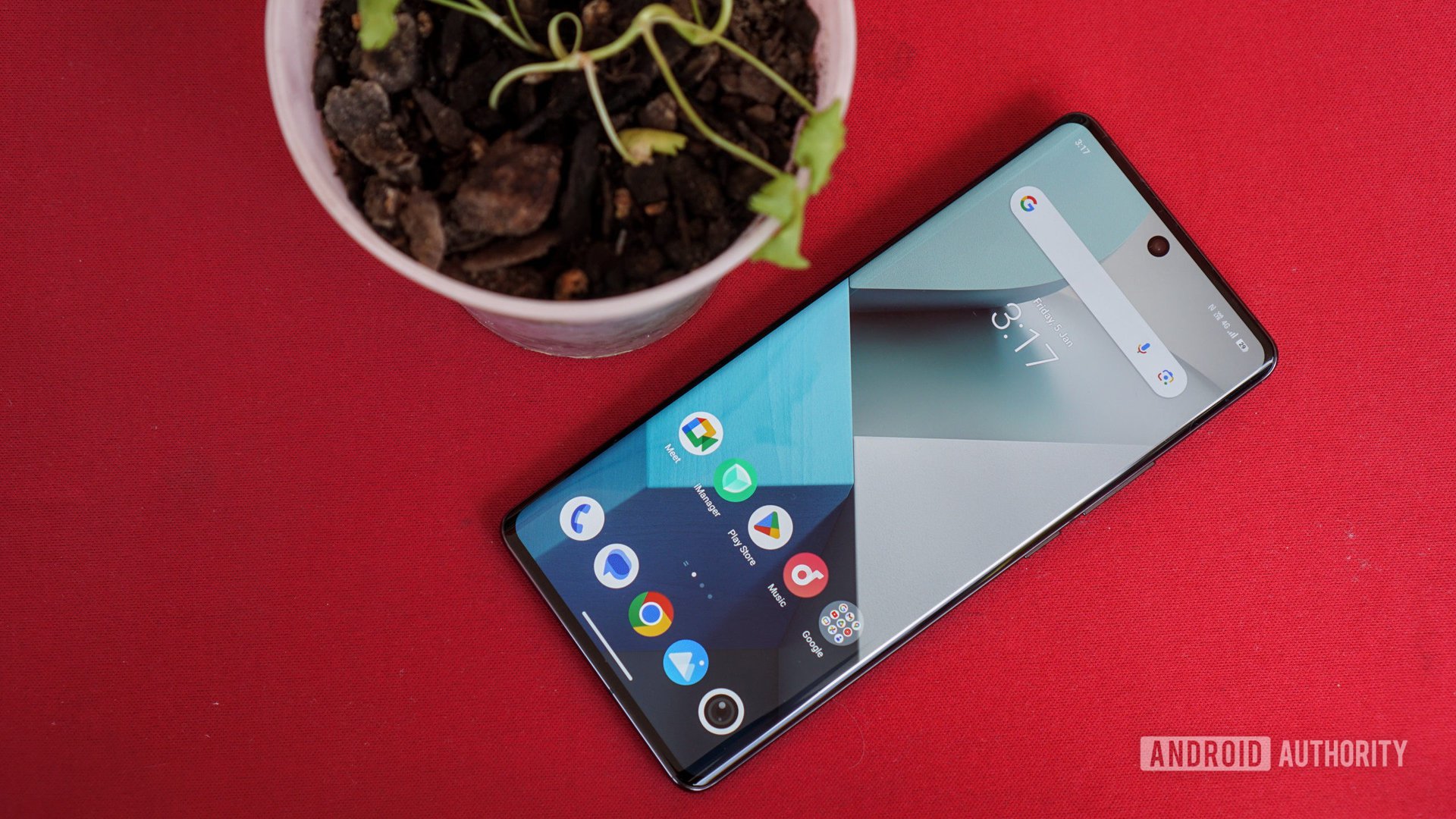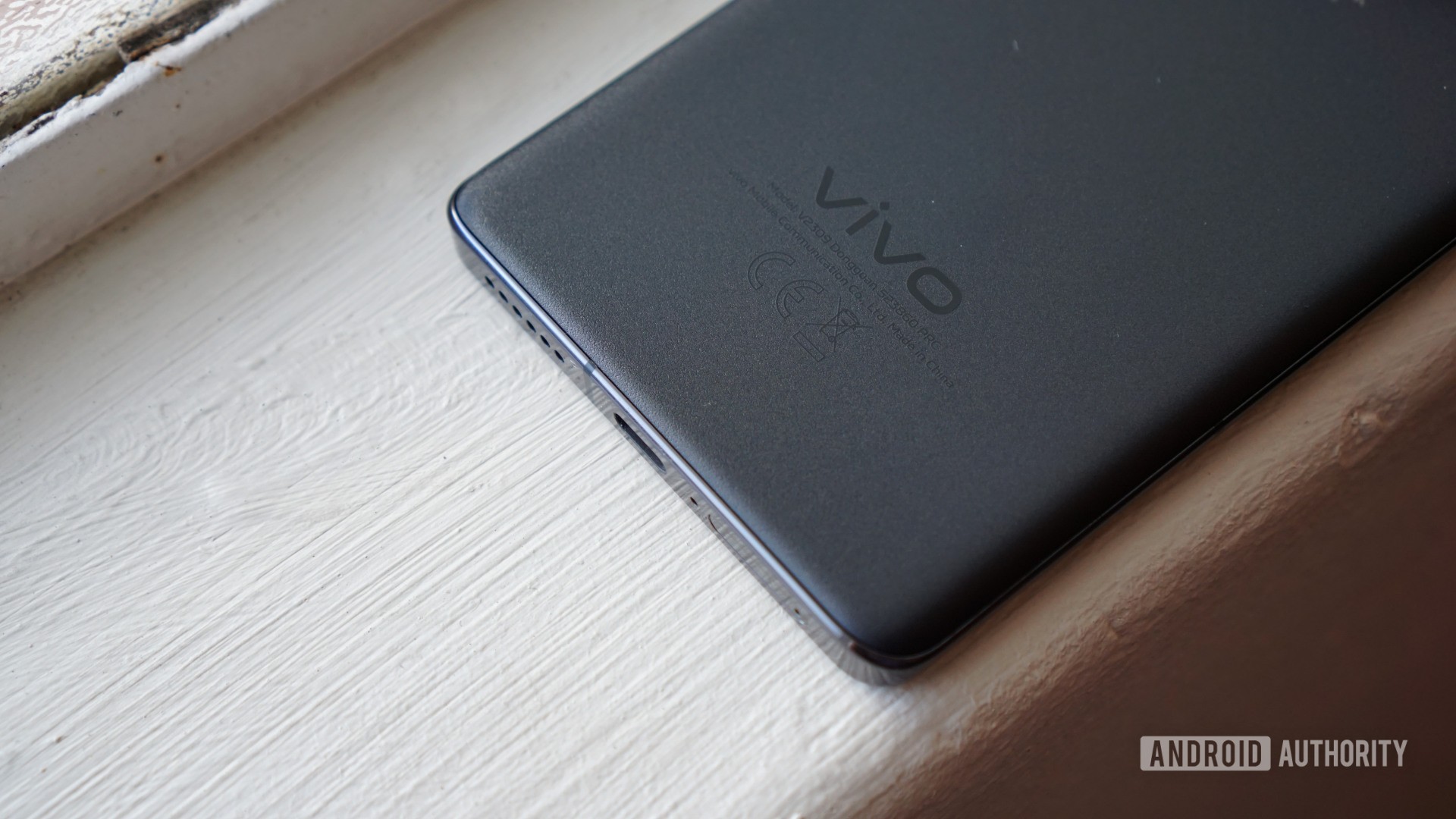Affiliate links on Android Authority may earn us a commission. Learn more.
The vivo X100 Pro's periscope lens is my new favorite camera
Published onJanuary 29, 2024
Google, Samsung, HUAWEI, and Apple are considered the top dogs when it comes to camera phones, but we’ve seen several more manufacturers joining this club in recent years. Chinese brand vivo is one of these players, and the brand-new vivo X100 Pro is a camera-focused flagship coming to global markets.
Does this new release warrant consideration if you value a great camera experience? What if you want a great all-around flagship phone? I took it for a spin to find out.
Vivo X100 Pro camera specs

You only need to look at the camera setup to see that the X100 Pro addresses a major shortcoming of its predecessor. More specifically, the X90 Pro‘s 50MP 2x telephoto camera makes way for a far more capable 50MP 4.3x periscope lens. In theory, that’s a good move, as I always thought the older phone’s image quality took a major dip at medium range (~5x). The X100 Pro’s periscope camera is a tiny 1/2-inch sensor (0.7-micron pixel size), but vivo uses a wide f/2.5 aperture for improved light capture.
Vivo has also seen it fit to offer a 50MP ultrawide camera in lieu of the older handset’s 12MP camera. Otherwise, the company is taking an “if it ain’t broke, don’t fix it” approach to the main camera. Expect the same one-inch 50MP main camera (IMX989, f/1.8), albeit with an improved ZEISS lens coating.
The vivo X100 Pro camera system takes the fight to rivals like Google, Samsung, and OPPO.
All of this is powered by vivo’s in-house V3 imaging chip, marking an upgrade on paper over the previous V2 chip. The company says it’s using the chip for its 4K Cinematic Portrait Video mode, but more on that later.
Launch the camera app and you’ll find a bevy of modes on offer. Aside from the usual modes (photo, video, portrait, panorama, night, timelapse, Pro), you’ve also got the aforementioned Cinematic Portrait video mode, a snapshot mode for fast-moving subjects, a landscape and architecture mode (featuring tilt-shift and perspective correction), an astro mode, and several more options.
Vivo X100 Pro camera review

What about general image quality, though? Photos taken via the main camera during the day are generally detailed with wide dynamic range. That giant sensor means you need to move back to get everything in focus, but at least vivo gives an on-screen warning this time. We’ve also got three color options on offer, and colors were suitably punchy when using the “vivid” toggle.
The X100 Pro’s main camera takes images that are still a little too sharp for my own taste at times, while the dynamic range can sometimes be too wide (resulting in a neon look or faint glowing). The ZEISS Natural Color toggle tames these issues (I stuck with “vivid” most of the time). Fingers crossed that we can adjust sharpness in the future, though.Vivo’s flagship phones tend to suck in more light than rivals, and the X100 Pro is no different. Low-light shots delivered clean, bright snaps with plenty of detail (although there is a little more sharpening than I’d like here). I did find that exposures for subjects could be a little dark in some situations, such as dusk. But generally speaking, the X100 Pro dukes it out for offering the best low-light camera performance.
The 50MP ultrawide lens isn’t much wider than the 1x camera, churning out images with a 109-degree field-of-view. So, I seldom felt the need to actually shoot with this camera. Nevertheless, these snaps generally stick close to the 1x lens, although there is noticeable corner softness in mixed lighting.
The 4.3x periscope camera is unarguably the star of the show, though. It doesn’t have the longest zoom or the most megapixels, but it rivals the P60 Pro’s 3.5x telephoto camera for being the most versatile telephoto camera on a smartphone today. In fact, I found myself shooting with this camera most of the time. Daytime snaps at 4.3x are replete with detail, although I did notice the occasional color and contrast inconsistencies between this shooter and the main camera.
The X100 Pro's periscope camera delivers great zoom quality, a macro mode, and solid low-light images.
Vivo’s telephoto camera also delivers great image quality at 10x, often beating my admittedly 2022-era Pixel 7 Pro. Image quality at 20x is hit-or-miss depending on the situation, and blown highlights and muddy textures won’t be uncommon. But I was still surprised to get a few decent shots at this zoom range. Just expect a major drop in quality thereafter.
Expect bright and detailed periscope camera snaps in low-light scenes, too. That’s partly due to the f/2.5 aperture, which is pretty wide for a periscope lens. Check out this comparison between the Pixel 7 Pro and X100 Pro below.
The X100 Pro sports a Telephoto Sunshot option too. It’s not a separate sun mode, but the phone will automatically apply adjustments to a sunrise or sunset scene when you’re using the periscope camera. There were a few times where I wasn’t sure the option kicked in, such as the fourth shot below (although I still liked this snap). The end results are supposed to be sunset shots with a more orange/red hue and a more well-defined sun. I’m not sure if this is a step above saturated AI modes of yore, but I still liked the colors and detail most of the time.
I loved the P60 Pro’s macro mode via the telephoto camera, and the X100 Pro’s periscope camera offers a macro mode too. The minimum focusing distance isn’t quite as close as HUAWEI’s handset (18cm versus 10cm), but it still means you can get some detailed close-ups without having to physically get close to a subject. Furthermore, vivo also gives you an 8.6x option if you need to get a little closer, and this can still produce great shots. I did, however, notice some inconsistent blur at times. Nevertheless, the shots of the dragonfly and fly below give you a good idea of what’s possible.
We already saw the X90 Pro’s great handheld astro mode, but the X100 Pro steps things up with a so-called Astro Portrait mode. It’s a cool idea, allowing you to capture a person and the starry sky in the same 1x shot — albeit with no bokeh effects as you’d expect with a typical portrait shot. This is a handheld mode, with the phone firing up its flash for a few seconds during the exposure.
Unfortunately, the subject in these images is often blurry and devoid of detail, while the sky has varying levels of quality upon closer inspection. I hope we see meaningful improvements to this via software updates.
The Chinese manufacturer is also making a big deal about the fact that the phone supports a so-called 4K Cinematic Portrait mode for video. This is vivo’s take on Apple’s Cinematic Mode for videos. This mode offers automatic focus switching, too, unlike portrait video modes seen on rival Android phones.
Cinematic Portrait videos aren’t always perfect, as I found focusing could be finicky at times (e.g. not recognizing a face for several seconds). But this is still the closest Android OEMs have gotten to Cinematic Mode. In a cool touch, vivo lets users adjust the focus point and strength after the fact. Really neat. Check out a couple of short sample clips below.
Don’t care for 4K portrait video? The phone still offers 8K/30fps recording if you value resolution and 4K at 60fps or 30fps. It’s just a pity that the Ultra Stabilization option still tops out at 1080p/60fps. Another downside is that the selfie camera tops out at a mere 1080p/60fps, which is a real shame when rivals Apple, Google, and Samsung have all moved on to 4K support.
Taken as a whole, however, the vivo X100 Pro brings a polished, flexible camera experience to the table. The periscope lens, in particular, stakes a claim for being the best all-around zoom camera in the business. Meanwhile, the 4K Cinematic Portrait mode and Telephoto Sunshot options are both fun (but not flawless) additions. You can view full-resolution samples via our Google Drive folder.
What about the rest of the phone?

Oh yeah. The vivo X100 Pro is a smartphone. I guess I have to talk about the rest of the package, eh? Thankfully, the phone is a premium offering through and through.
The X100 Pro offers an IP68 rating along with a curved display, a sturdy aluminum frame, and an AG glass back that’s incredibly slippery; slap on the included case as soon as possible. vivo sadly insists on keeping the “professional photography” text on the top frame as well as “xtreme imagination” branding on the rear cover. Ugh.
The X100 Pro ticks plenty of boxes that are associated with modern premium smartphones.
The flagship stylings also extend to the screen, serving up a 6.78-inch LTPO OLED panel. It’s not the sharpest we’ve ever seen (1,260 x 2,800), but it’s a step above FHD+ screens and gets plenty bright when outdoors. The screen also drops right down to 1Hz, and it aggressively hits this figure, ostensibly in a bid to save battery life.
Speaking of battery life, the X100 Pro’s endurance was disappointing given the 5,400mAh battery. I was able to get just about eight hours of screen-on time with light usage (browsing Reddit, listening to podcasts), while heavier usage (e.g. plenty of camera usage, automatic photo/video backups to pCloud) resulted in just five and a half hours of screen-on time. I found myself charging the phone every other day, but I can definitely see this becoming a daily charge if you use your phone for music/video streaming and some games throughout your work day.
Fortunately, you’ve got 100W wired charging and 50W wireless charging on offer here. The phone ships with a 120W charger, and it takes roughly 40 minutes to get a 100% charge. That’s with the fast charging toggle disabled by default. So those who want even faster charging can enable this option.
This is the first smartphone with the MediaTek Dimensity 9300 processor, and it’s a beast of a chipset on paper. We’ve already posted our Dimensity 9300 vs Snapdragon 8 Gen 3 benchmark article, showing that the Dimensity-equipped vivo X100 Pro edges out the REDMAGIC 9 Pro’s Snapdragon chip for multi-core CPU performance and PCMark workloads. Meanwhile, the Snapdragon chip delivers better single-core CPU scores and GPU results. But stress testing shows that the X100 Pro lags behind even some of 2023’s phones.
For what it’s worth, the phone delivered smooth everyday performance when launching apps, multitasking, and using the camera. I also had no problem playing demanding apps like Genshin Impact, Honkai Star Rail, and PS2 emulators at a mostly smooth frame rate. But the poor sustained performance doesn’t bode well for advanced games several years down the line.
Vivo is offering its FunTouch OS Android skin, and the company has done a good job of reducing bloatware year over year. I’m also very pleased to see per-app volume controls being implemented, following in the footsteps of Samsung and Xiaomi.
FunTouch OS is in a better place these days, but vivo needs to improve its update pledge.
Unfortunately, the one downside to the X100 Pro software is that the company is only offering three major OS updates and four years of security patches. That’s better than the likes of Sony but still a way off Google and Samsung’s current seven-year update policies.
Nevertheless, other additions like well-balanced speakers, an IR blaster, and a fast and accurate optical in-display fingerprint sensor show that there’s a lot to like outside of the cameras.
Vivo X100 Pro: Should you buy it?

It’s only January, but the X100 Pro is a strong contender for the best camera phone of the year. That’s mostly due to the excellent periscope camera, which packs good long-range zoom, great macro snaps, and impressive low-light shots. But the rest of the camera package also delivers polished results.
Don’t care for the cameras? Then the new vivo handset still brings perks like a sharp, bright screen, an IP68 rating, fast wired/wireless charging, and an improved Android skin. These upsides are stymied by throttling issues and disappointing battery life, though.
The X100 Pro's disappointing update pledge and throttling issues are offset by a top-tier camera experience and plenty of premium extras.
The X100 Pro is confirmed for Europe and India, arriving in India first. The device initially had a recommended price of Rs 96,999 (~$1,170) for the sole 16GB/512GB variant in India, but that RRP has now dropped to Rs 89,999 (~$1,078). Either way, it’s cheaper than the S24 Ultra and iPhone 15 Pro Max. Vivo would go on to confirm a €1,199 (~$1,283) price tag for the 512GB model in Europe, significantly undercutting the S24 Ultra.
The Galaxy S24 series will remain the biggest threat to the X100 Pro. But even with the Galaxy S24 Ultra in mind, smartphone photographers should consider this device.

